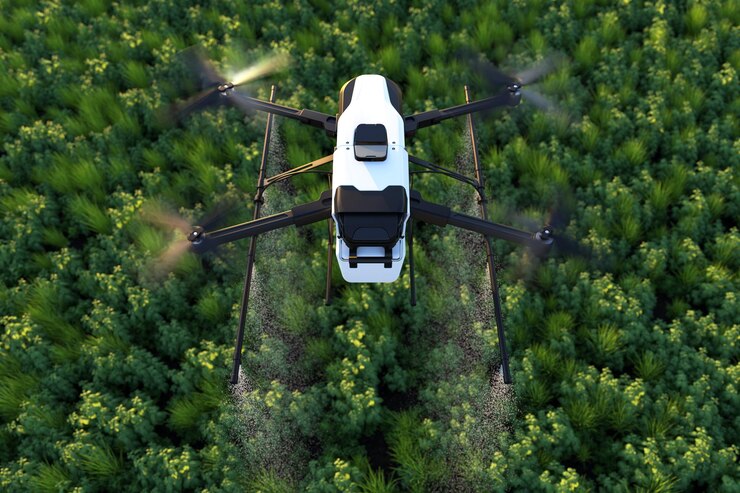Introduction:
In recent years, agriculture has witnessed a revolutionary transformation with the integration of drone technology. Drones, also known as Unmanned Aerial Vehicles (UAVs), are proving to be invaluable tools for farmers, offering innovative solutions to age-old challenges. This article explores the multifaceted ways in which drone technology is reshaping the agricultural landscape.
- Precision Farming:
Drones equipped with advanced sensors and imaging technologies enable farmers to practice precision agriculture. These aerial vehicles can capture high-resolution images of crops, providing valuable insights into plant health, growth patterns, and potential issues. This data empowers farmers to make informed decisions, optimizing resource utilization and minimizing environmental impact. - Crop Monitoring and Management:
Drones play a crucial role in monitoring large expanses of farmland efficiently. They can be programmed to fly predetermined routes, collecting data on crop health, soil conditions, and pest infestations. This real-time information allows farmers to detect problems early, leading to more targeted interventions and improved overall crop management. - Spraying and Seeding:
Drones equipped with precision spraying systems have revolutionized the way pesticides and fertilizers are applied. By precisely targeting specific areas, drones reduce chemical usage and minimize environmental impact. Additionally, some drones are capable of aerial seeding, making it possible to cover vast areas with seeds quickly and effectively. - Livestock Management:
Beyond crop monitoring, drones are proving beneficial in managing livestock. Farmers can use drones to monitor the health and behavior of animals, locate lost cattle, and assess the condition of grazing fields. This real-time monitoring enhances overall livestock management practices, contributing to improved animal welfare and productivity. - Data Analytics and Decision Support:
The data collected by drones is a treasure trove of information. Advanced analytics tools can process this data to provide farmers with actionable insights. From predicting crop yields to optimizing irrigation schedules, the integration of drone-generated data into decision-making processes is enhancing overall farm efficiency. - Weather and Environmental Monitoring:
Drones equipped with weather sensors contribute to improved environmental monitoring. They can track weather patterns, soil moisture levels, and other environmental factors affecting crop growth. This real-time data helps farmers adapt to changing conditions and make informed decisions to mitigate risks.

Conclusion:
As agriculture continues to evolve, drone technology stands as a pivotal force driving innovation. The integration of drones into farming practices enhances efficiency, sustainability, and productivity. While challenges such as regulatory frameworks and initial investment costs exist, the long-term benefits of incorporating drone technology into agriculture are undeniable. As we move forward, the collaboration between technology and agriculture promises a brighter, more sustainable future for our global food supply.




